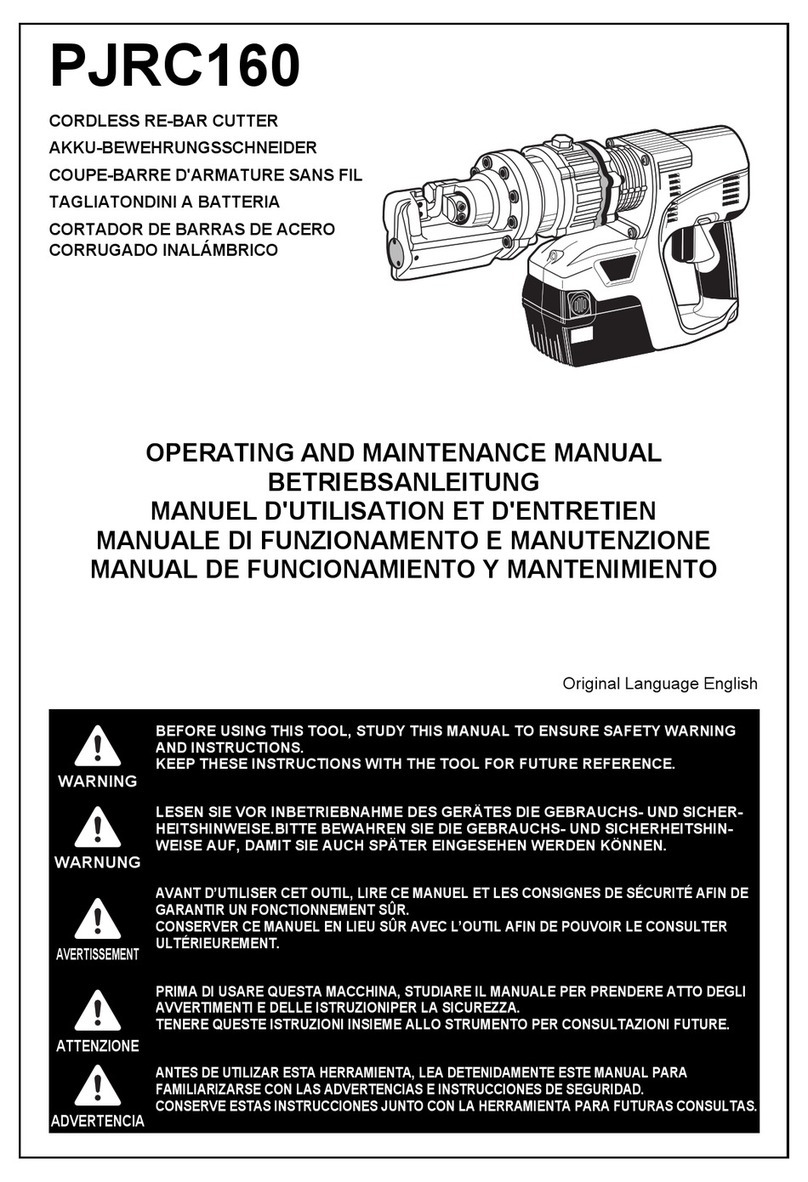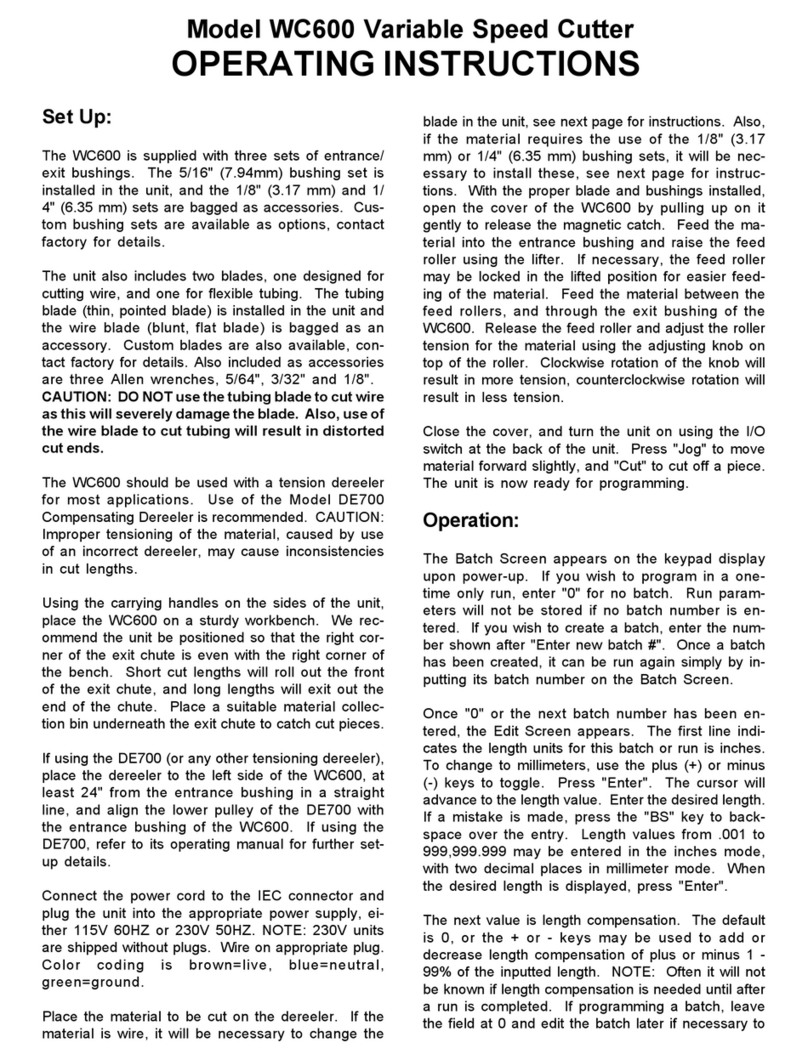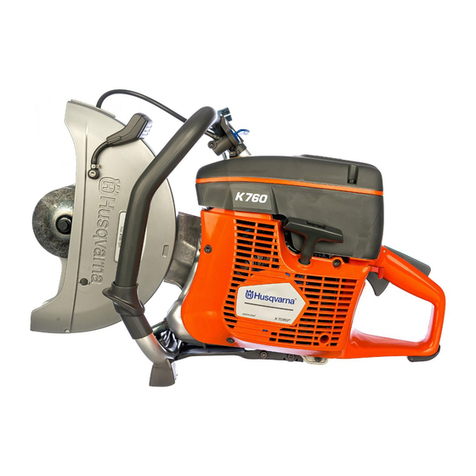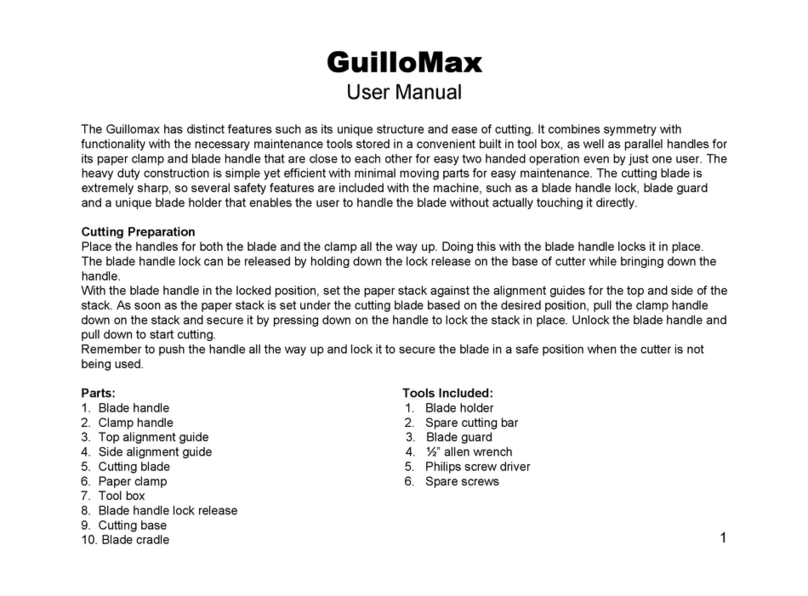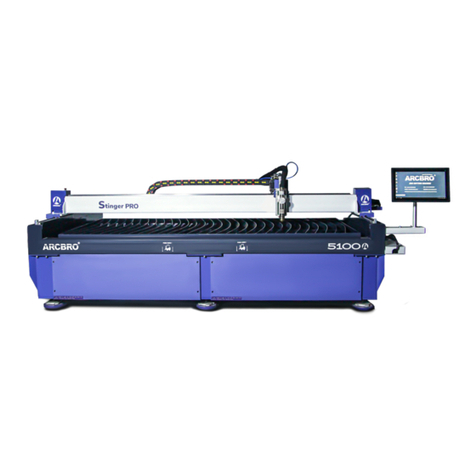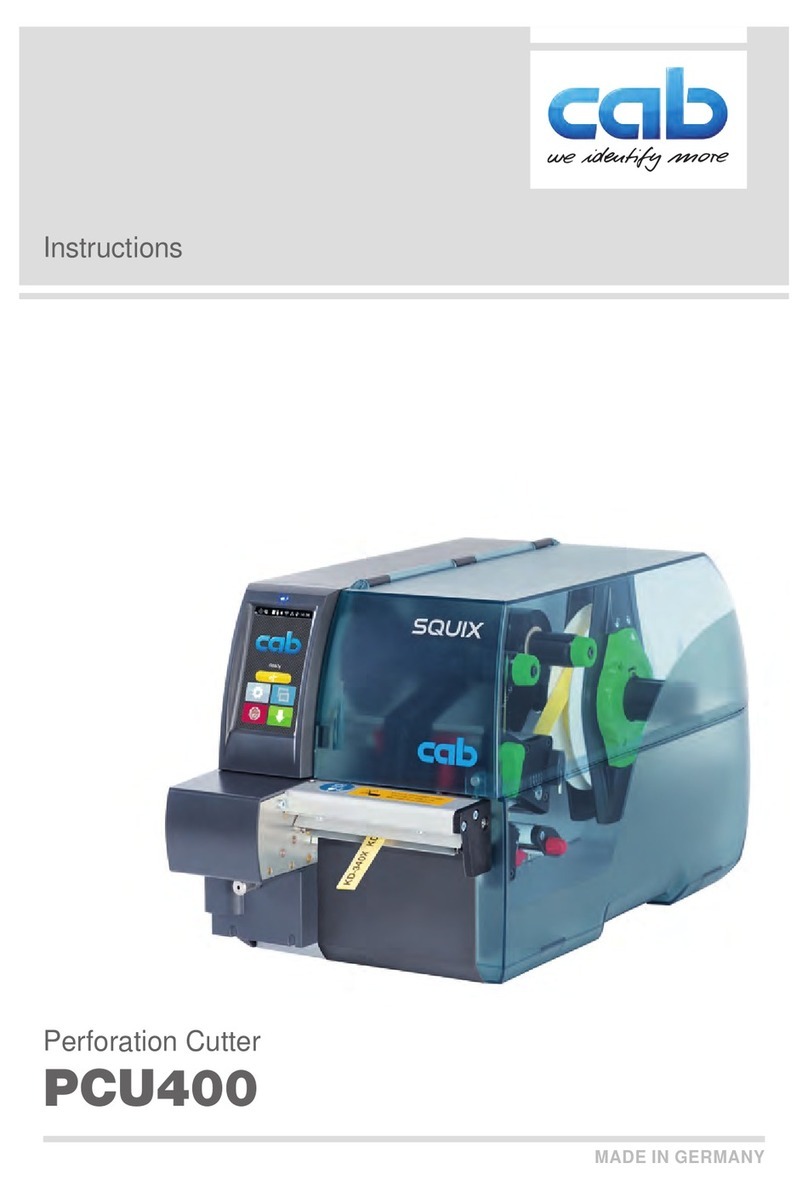
9
7. HOLD THE TOOL FIRMLY WITH BOTH
HANDS
Failure to do so may lead to serious injury.
8. DO NOT LEAVE THE TOOL RUNNING
Operate the tool only when hand-held.
9. USE ONLY THE AUTHORIZED BATTERY
PACK
Use only MAX JPL92530A battery pack. If the
tool is connected to a power supply other than
the authorized pack, such as a rechargeable
battery, a dry cell, or a storage battery for use
in automobiles, the tool may be damaged,
break down, overheat, or even catch on fire.
Do not connect this tool to any power supply
except the MAX JPL92530A battery pack.
10. TO ENSURE MAXIMUM PERFORMANCE,
FULLY CHARGE THE BATTERY BEFORE
USE
A new battery pack or one not used for ex-
tended periods may have self-discharged
and thus may need recharging to restore it to
a fully charged condition. Before operating
the tool, make sure to charge the Battery
pack with specified battery charger.
11. DO NOT BLOCK THE VENTILATION
HOLE OF THE TOOL. DO NOT PUT ANY-
THING INTO THE VENTILATION HOLE.
The tool may heat up, emit smoke or break
down.
It is very dangerous because foreign matter
may be thrown from the tool.
12. DO NOT CONTINUOUSLY USE OF THE
TOOL FOR EXTENDED PERIODS OF TIME.
The motor temperature and oil temperature
will rise to the point that the tool cannot pro-
vide sufficient performance.
13. DO NOT DROP THE TOOL.
This may cause damage or malfunction.
When working in high locations, use due
caution for the operating environment or sur-
rounding persons.
14. USE ONLY THE SPECIFIED BLADES AND
ACCESSORIES.
Unspecified blades and accessories may not
only cause equipment trouble but also injury
or accident.
15. USE ONLY THE SPECIFIED HYDRAULIC
OIL.
Unspecified oil may cause equipment trou-
ble and inadequate power, and adversely af-
fect the tool.
16. WHEN YOU CUT REBAR SHORT, THE
CUT PIECE MAY BE THROWN AS
SHOWN AT TOP, THEREFORE MAKE
SURE THE AREA AROUND YOU IS SAFE
BEFORE CUTTING THE REBAR.
17. BATTERY CHARGING PRECAUTION
1 Use only specified battery charger and
Battery Pack
Failure to do so may cause the Battery to over-
heat or catch fire leading to serious injury.
2 Charge the Battery at the specified
voltage
Failure to do so may result in overheating,
or inadequate charging possibly causing
serious injury.
3 Never use a transformer
4 Never connect the Battery charger to
an engine generator direct-current
power supply
The charger will break down or be dam-
aged from burning.
5 Avoid charging the Battery pack in the
rain, in a damp place, or where water is
splashing
The Battery charger is for indoor use.
Charging a damp or wet Battery pack will
cause an electric shock or a short circuit
that may lead to damage from burning
and even the tool catching on fire.
6 Do not touch the power cord or plug
with a wet hand or glove
This may cause injury from electric shock.
7 Do not put a cloth or any other cover
on the Battery charger while the Bat-
tery pack is being charged
This will cause overheating and damage
from burning, or the Charger may even
catch fire.
8 Keep the Battery pack and Battery
charger away from heat and flames
9 Do not charge the Battery pack near
flammable materials






